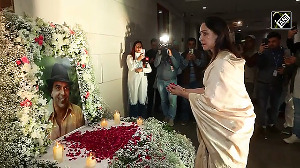A M Naik, chairman and managing director, Larsen & Toubro: The Budget 2004-05 was presented in the backdrop of high expectations. The economy was resilient with a strong growth in GDP of 8.2 per cent catapulting India to the 2nd position in the world.
All the economic indicators were encouraging with a good growth in all the three segments of agriculture, industry and services. The current Budget aims to carry forward an economic growth rate of 7-8 per cent.
The highlight of the Budget is fiscal stabilisation which was identified as the major requirement for India to remain in the high growth trajectory of 8-10 per cent.
While fiscal deficit to GDP ratio has been reduced to 4.4 per cent, revenue deficit is at 2.5 per cent. This is a positive signal for investment, as it will help attract FDI and upgrade the sovereign rating outlook of the economy.
The Budget has made large allotments to the infrastructure, agriculture and rural areas. While the estimates are optimistic a lot will depend on the implementation.
At the outset, it is not clear about the sources of revenue that would match the committed expenditure. In such a situation, the deficit indicators as budgeted may turn out to be optimistic.
Perhaps the finance minister is relying on a strong growth to balance the revenue and expenditure. Another issue on which the Budget could have been more forthcoming is subsidies.
The Budget only mentions better targeting and asking the National Institute of Public Finance to prepare a blue print to attain this objective.





